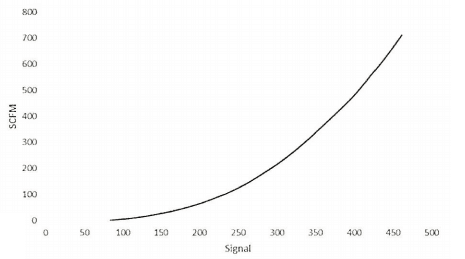A thermal mass flow meter is a precision instrument that measures gas flow entirely differently, eliminating the need for pressure and temperature correction. Thermal mass flow meters measure the heat transfer as the gas flows past a heated surface. The gas molecules create the heat transfer, so the greater the number of gas molecules in contact with the heated surface, the greater the heat transfer. Thus, this method of flow measurement is dependent only on the number of gas molecules and is independent of the gas pressure and temperature.
So, how does it do these devices work? They consist of two temperature sensors. The temperature sensor is the reference and also provides a measurement of the gas temperature. The flow sensor is heated to maintain a slight temperature difference above the temperature sensor. As gas flows past the heated flow sensor, heat transfer occurs. The instrument measures the amount of power required to maintain the temperature differential which is proportional to the mass flow rate. The amount of power in the form of heat is very low, therefore this is safe technology for natural gas, hydrogen, and other flammable gases.

Figure 1: Thermal Mass Flow Sensor
Thermal mass flow measurement is an inferred flow measurement. These meters measure heat transfer and then relate the heat transfer to the mass flow rate from the NIST traceable calibration. While calibrating the flow meter, a known amount of gas is run past the sensor and the signal is measured. This is performed multiple times over the operating range of the meter.

Figure 2: Signal vs. Flow Rate Calibration Curve
The benefits of thermal mass flow meters include:
- Mass flow measurement without the need for pressure and temperature correction
- Excellent sensitivity at low flow rates
- High turndown capabilities
- Easy installation
Flow meters come in different styles, technologies, abilities, etc. No one meter that can do everything – but they all have their purpose. To learn more about flow meters contact our experts today!
